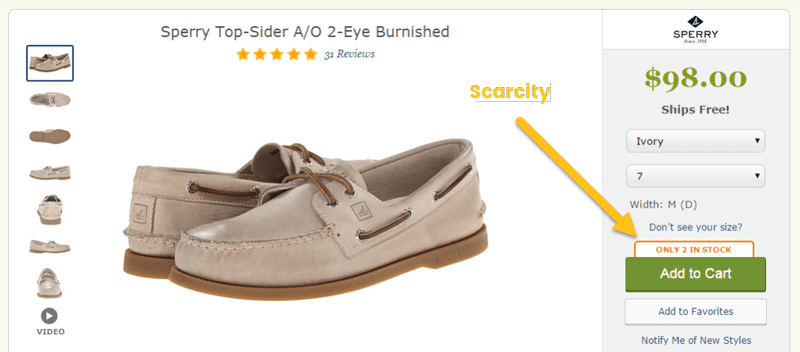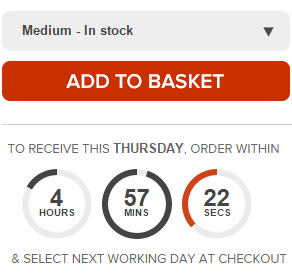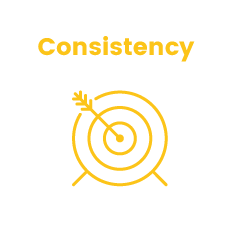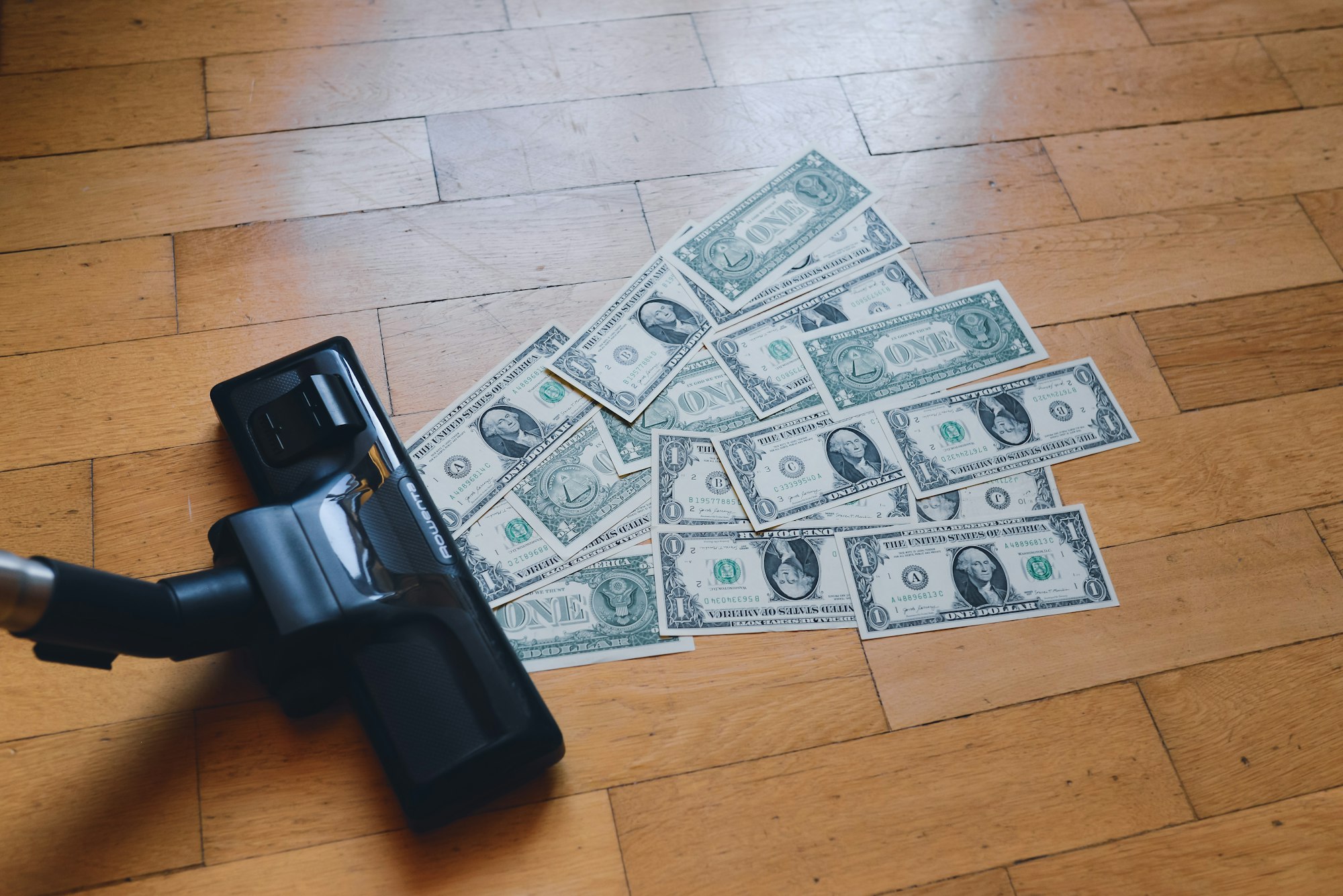
Welcome to the second lesson in eCommerce Psychology 101! Where we teach you how to persuade your online shoppers to purchase more from you more often. We are taking the teachings of Dr. Robert Cialdini and applying them to the ecommerce world. Last week we took a look at the consensus principle, and this week we will focus on the scarcity principle.
In this post we will go over what your ecommerce store can learn from a McDonalds sandwich and how to harness that power to get shoppers to convert more often. Before we get into increasing conversion through scarcity let’s look at what scarcity really is.
What is the Scarcity Principle?
The scarcity principle is used in both social psychology and economics. The principle is based on the idea that we as humans place more value on things that are not readily available or easy to obtain. When we can’t have something we end up desiring it even more.

In psychology we notice that human behavior can be strongly influenced by this desire. When we establish that an item is rare or only around for a limited time, customers become much more motivated to act.
Take for example the McRib, a everyday menu item at McDonalds in the 1980’s. The McRib did not have the success that McDonalds had hoped for when they introduced the item in 1981. Due to the poor sales the item was removed from the menu in 1985. But what happened was surprising.
Upon the announcement that the item would be removed sales began to skyrocket. As soon as people realised they would never get one again they flocked to the under performing product. The increase in sales lured McDonalds to try re-introducing it to the menu. Once the item became a staple again customers lost interest.
Now McDonalds has learned the power of scarcity and only introduces the McRib for a short period of time each year in North America, despite offering it year round in Europe. They know that American consumers are drawn to the sandwich because it is exclusive and can generate more sales offering it a few weeks a year than if they offered it all year long. It’sssssss Back!
Tactics to Increase Perceived Scarcity
So, what can a messy McDonalds sandwich teach us in ecommerce? It teaches us how a shopper is influenced by the exclusivity or availability of a product. When a product appears as though it will soon be gone, a shopper is way more likely to convert and do it quickly.
Here are some tactics you can try on your ecommerce site to get the power of scarcity working for you!
Inventory Counters
In order to create scarcity you need to show your shoppers something that makes your goods appear to be “almost gone” a great way to do this is with an inventory count. This is a display of the number of items you have in stock of a particular product.

In the example above Zappos shows the shopper that there are only 2 pairs of this particular shoe left in that size. If you are thinking of getting this shoe than you are probably going to order it quick before those last two are gone.
Zappos only shows this message when they have just a few pairs left, but what if you always gave a reminder that a shopper must act quick? You can do this by adding tags to your items like “limited quantities available” or “select colors only.” This gets a shopper in the mindset to convert now or they will miss out.
Key Aspects of Inventory Counters:

The right language: They key to creating scarcity with an inventory counter is using the right language. Even if there are 50 items left the addition of wording like “only” or “just” makes 50 seem like you are almost out.
Positioning: You want to display the information about your inventory level as close to your call to action as possible. In this case that would be the add to cart button. You want there fear of missing out to induce an immediate action/purchase.
Limited Edition Items
A great way to introduce scarcity to your ecommerce site is with limited edition items. When a shopper knows that a product will only be around for a limited time they are more likely to purchase it and will do so more quickly.
Be sure to tie a timeline to your limited edition items. If you do not give a time frame your shoppers will not view them as scarce and your limited edition items will seem like regular editions. Popular ways to create limited edition items are based on a season or a time period. Some examples could be:
- Monthly products (Fragrance of the month)
- Holiday products (Festive features)
- Seasonal products (Summer selects)
Cosmetic, clothing, and candle companies are great industries to create limited edition items based on any of the above. Here is an example of what Yankee Candle does.

If you are not going to tie your limited edition item to a time period you should instead tie it to a quantity. With this type of limited edition item you will create scarcity in the same way that you would with an inventory counter.
For example, you would say something like: Only 50 Smile.io loyalty programs ever made! Obviously this is not true - there is always a Smile.io loyalty program available to you!
Key Aspects of Limited Edition Items:

Show how limited it is: A shopper will not see a product as “limited” if you don’t showcase when it will no longer be available. Make the “limited” component stand out!
Decide on limiting factor: You can establish how limited a product is in two ways, time period or stock level. Sometimes a product lends itself better to one than the other. Be sure to take some time to discover which makes more sense.
“The Vault” Technique
This is my favorite way to capture the power of scarcity! You can actually take an item that has been declining in sales or has been performing poorly and increase its sales before you discontinue it.
You can recreate what happened with the McRib with items in your store that are not performing well, just by removing them in the right way. This is a great alternative to discounting to clear inventory, which can have some negative impacts on your store.

Instead of putting a traditionally “negative” spin on your products like: marked down, reduced to sell, or sale, try using the vault technique. Yankee Candle has a section of items that will be returning to the vault. This is a very positive way of saying no longer available, and makes the item still appealing if it is reintroduced.
It creates demand for the item now as customers scramble to get it before it is gone which we now know is scarcity. This technique also allows you to reintroduce the product in the future, something that is not possible with traditional inventory clearing methods.
I have named this technique the vault because of the success it had for Disney classic movies that are moved into the vault and released again every seven years.
This technique is seen as controversial by many Disney fans, but it has been effective at keeping old movies relevant and fresh decades after they were released.
Key Aspects of the “Vault” Technique:

Language: You do not want this product to seem like it has been discontinued, you want to make it seem like it has become rare. Be sure to keep the language you use positive and exclusive!
The right product: Do not make a rash decision when using this technique. You do not want to remove an item that has not had adequate time to prove its worth. You may be trying to spike sales in an item that will provide more long term value if you let it be.
Timers
This final recommendation is also the most straightforward one. You can create scarcity by showing how long a customer has before an offer expires. You can add a timer to almost any offer, but they are most effective for sales and shipping.

The above example is from Simply Hike and it shows how long you have to place an order if you want to receive it by the next day. The presence of the timer is a great way to create scarcity, if a shopper does not order soon they will miss out.
Shipping timers are also popular during the holiday season. A timer is displayed to show you when you must place an order for it to be guaranteed delivered by a specific holiday.
Another popular tactic is showing how long a sale will last for. ASOS is famous for this tactic, they will announce a sale via an email marketing campaign to get people excited and then introduce a time element on the site.

This large countdown creates scarcity by establishing a sense of urgency. Shoppers act quickly to take advantage of the sale before it is gone. Tools like Bold’s Product Discount allow you add these live counters to your site.
Key Aspects of Timers:

Ticking timer: Timers are effective when a shopper can see that time is dwindling down. A timer that is ticking as they are shopping is more effective that simply stating a sale will end at a certain time.
Be genuine: If you are using a timer for sales be sure that you don’t abuse it. While it is effective, it loses effectiveness if a shopper sees that you are always running a sale.
Persuading in eCommerce
That covers persuading in ecommerce with scarcity. To see more of Robert Cialdini’s persuasion principles applied to ecommerce just click on the principle you would like to see below.






Click the principle you would like to know more about!








